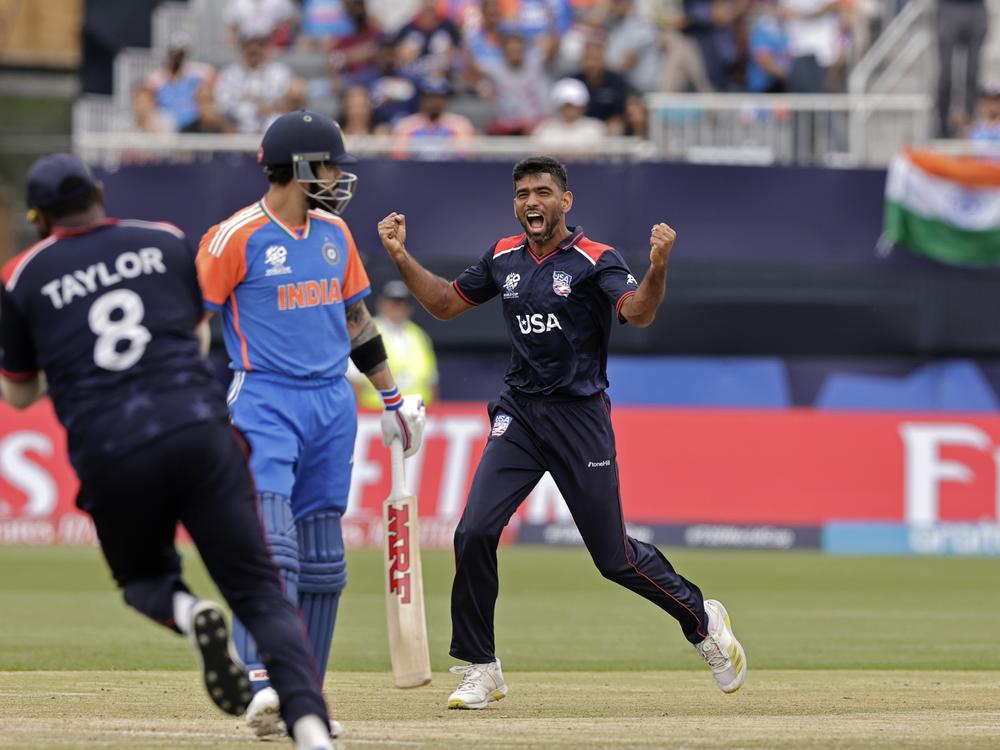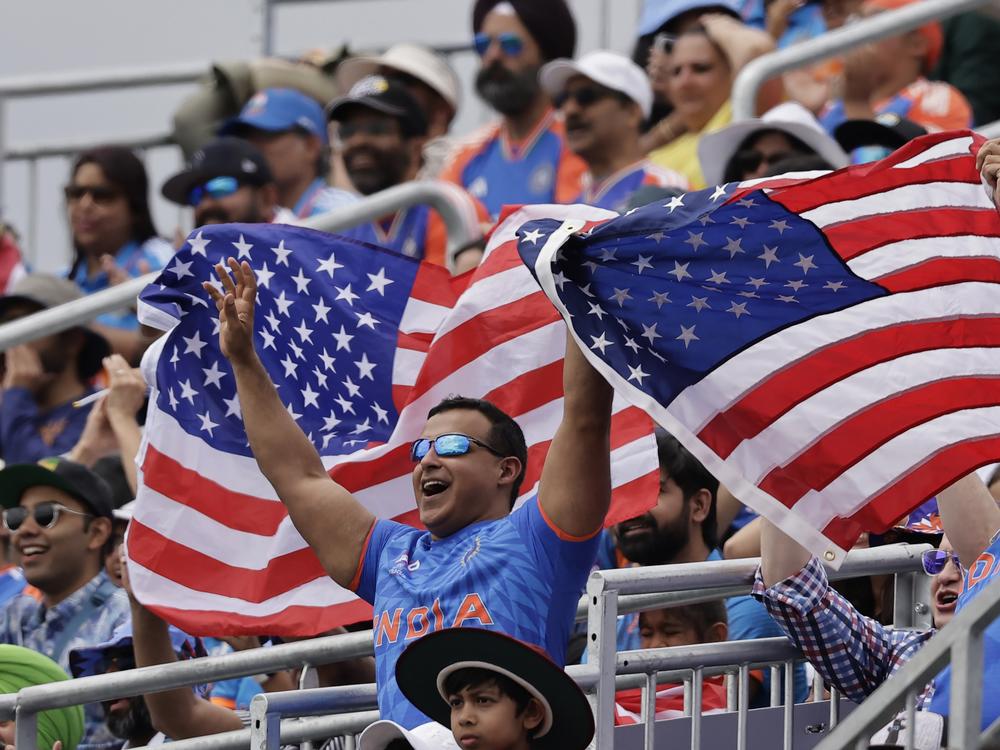Section Branding
Header Content
Here's what to know about the U.S. team's Cinderella run at the Cricket T20 World Cup
Primary Content
Before this month, the U.S. national cricket team had never before played in a T20 World Cup, one of the world's most-watched sporting events.
Now, the U.S. is a bona fide Cinderella and stands just one win — or a rainout — away from advancing to stand alongside the world's finest teams in the tournament's second round.
Though cricket is the second-most popular sport worldwide, it has long struggled to gain a foothold in the U.S. Building that interest was one of the organizers' goals in selecting the U.S. as a co-host of this year's T20 World Cup, the premiere international tournament of cricket's most accessible and fastest-paced format.
Now, after a stunning upset of Pakistan and a close loss to India in which the U.S went toe-to-toe with some of the greatest cricketers in the world, the national team — along with its breakout star Saurabh Netravalkar — has captured the attention of cricket diehards and newcomers alike.
"A seed has been planted for the sport in the country," Netravalkar, a bowler and the breakout star of the team, told NPR.
With a win Friday against Ireland, the U.S. will advance to the next round of the tournament to play at least three more games. Buckle up.
Tell me about some of the players on the team
The U.S. team has many players who were born overseas and have since moved to the U.S. to make their homes here. Among the nationalities: India, Pakistan, South Africa and New Zealand. The team's coach, Stuart Law, is from Australia, and its captain, Aaron Jones, was born in Queens to immigrants from Barbados.
The team's breakout star has been Netravalkar, whose bowling in the super over (basically overtime) of the match against Pakistan, helped seal the victory for the U.S. His heroics continued against India, even as the U.S. fell short.
Unlike his opponents in those matches, who are professional players, Netravalkar has a day job: He works as a software engineer.
Netravalkar was born and raised in India, where he was a promising cricket prospect and played for India's under-19 national team. But in 2015, he decided to pursue software engineering and moved to the U.S. for graduate school. Now, with a full-time job, he trains during the evenings and weekends, and his employer, the tech company Oracle, allows him to take leave to pursue his cricket career, he said.
"Instead of one being my full-time job and the other being a passion, I still love doing my job as well," he said. "As long as I'm able to do what I love, to do both, that's the goal for me."
Tell me about a highlight that I can talk about with my friends
The scene: Wednesday, India v. USA. The U.S. batted first and scored 110 runs — modest, respectable, maybe enough to win.
Then it was India's turn to bat, and the heavyweight sent out two of its best players to start, team captain Rohit Sharma and megastar Virat Kohli, perhaps the most famous cricketer in the world, whose 269 million Instagram followers are more than any athlete not named Messi or Ronaldo.
"I was trying to look at it as just any other player that I'm bowling to," Netravalkar said. "I was trying to keep the names out of it and to just follow the process."
In doing so, he stunned India and thrilled the crowd of 30,000 by dismissing Kohli on his first ball, before the star had a chance to score a single run — a feat in cricket called a "golden duck." Soon after came Netravalkar's dismissal of Sharma, out on a popped-up ball after scoring only three runs.
"They are two of arguably the best batters in the world. It does feel good," Netravalkar said, adding that his mom had traveled from India to see the match. "It was a special day for me."
Have people in the U.S. been watching?
It's been a hit. Tens of thousands have turned out to see the matches held in Texas, New York and Florida. Tickets to see India play Pakistan sold for nearly $1,000 or more apiece on the secondary market.
"[The] U.S.A. is such a diverse country. There's a lot of people who migrated from different parts of the world — and with the people, the sport also should travel," said Anand Haury, another fan at Wednesday's match, speaking to member station WSHU.
At the U.S.-India match Wednesday on Long Island, the crowd cheered for both teams. Many in the stands wore a blue India jersey while holding an American flag.
"I grew up in India, then I came to the U.S.A. ten years ago. And the U.S.A. gave me everything, so I'm supporting both countries," said Rutz Pat, who came from Pennsylvania to see the match.
And the response online has been tremendous, with coverage in mainstream media and viral posts on social media.
I admit I don't know how to watch cricket. How does it work?
Lucky for you, NPR's producer in Mumbai is here to help. Take a listen to this Morning Edition segment and you'll be ready to watch Friday's match.
Okay, tell me again about Friday's match. The U.S. wins and moves on?
That's right. The match between the U.S. and Ireland is scheduled to begin at 10:30am Eastern time.
If the U.S. wins, the U.S. will advance to the round of 8, another group stage called Super 8s. There will be two new groups of four teams, each of which will play each other. The top two teams in each group will advance to the semifinals.
If the U.S. loses, its path to advancement is much more difficult.
And with the heavy rain taking place in southern Florida this week, there's one other possible result: a rainout. If the game is canceled due to rain, the U.S. would advance.
Additional reporting by WSHU's Eda Unzular in Nassau County, N.Y.


